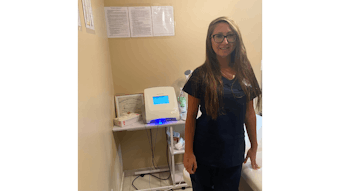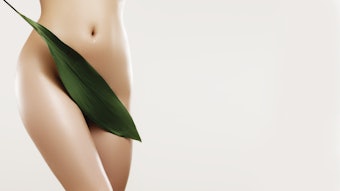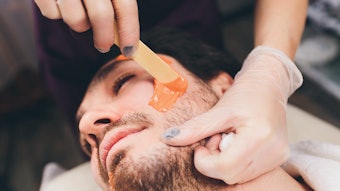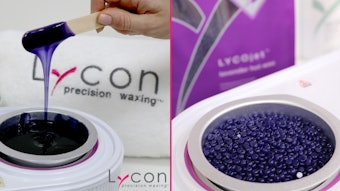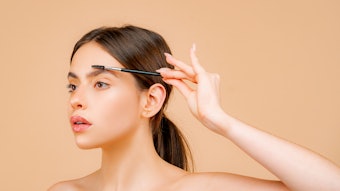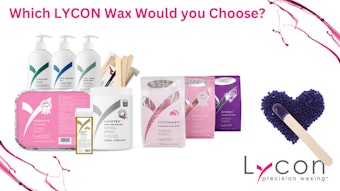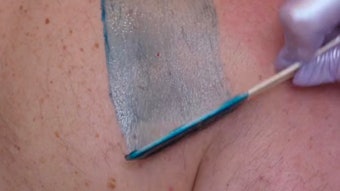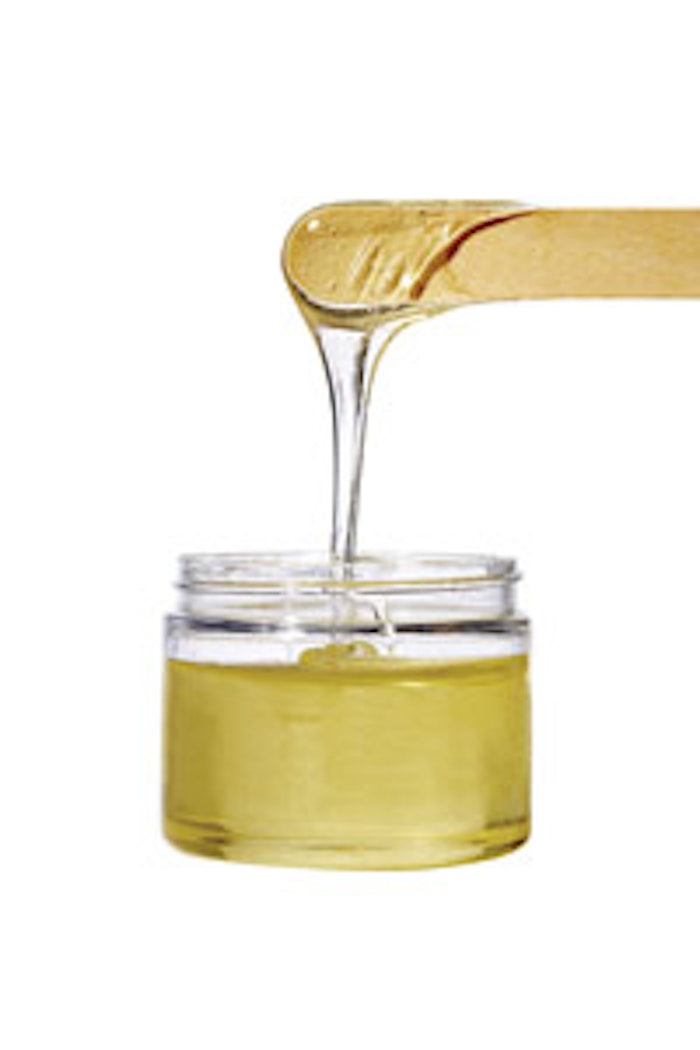
Historically, hair removal has been a common ritual among people, going as far back as cavemen scraping the hair off of their faces with flint blades, sharp rocks or pulling it out with two seashells held together. Throughout the centuries, a plethora of tools, concoctions, methods and mixtures—some even toxic—have been used to remove unwanted hair. In the 1760s, French barber Jean Jacques Perret invented the Perret razor, followed by the advent of a much safer type of razor invented by King Camp Gillette in the 1880s; the first razor for women was invented in approximately 1915.
Fashion has also been a determining factor in the desire to remove hair from specific areas. For example, with clothing revealed more skin during the roaring 20s, removing hair from the legs and underarms became a necessity. The bikini wax became popular as bathing suits shrunk with the introduction of the first bikini in 1946, advancing into the Brazilian wax. Men have also become more concerned with unwanted hair for either aesthetic purposes or due to certain sports. According to the most recent statistics from the American Society for Aesthetic Plastic Surgery, laser hair removal ranked third among the top five nonsurgical procedures performed in 2011. The number of procedures totaled 919,802; 107,450 of which were performed on men.
However, even with improved procedures and tools, two issues still exist: pain and the trauma caused to the skin by either the heat, friction or both associated with most types of hair removal. Because of these factors, the science and technology of removing unwanted hair has progressed in the esthetic industry with no signs of slowing down.
Skin care professionals must look at more than just the removal of hair; they must also treat and maintain the health of the surrounding skin. It is your responsibility to educate clients about the best skin care methods to achieve the desired results and to avoid potential complications from hair removal treatments. You must also choose the best method of hair removal according to the client’s skin type, any other conditions that may be present and the area being treated. These determining factors will not only contribute to successful client outcomes, but also will maintain the client/esthetician relationship, and increase revenue through product sales and other in-spa treatments that complement the chosen hair removal procedure.
Caring for the skin
When performing treatments that induce heat and trauma to the hair follicle, the surrounding skin is affected in the same way. This can be problematic, especially for darker Fitzpatrick skin types. Skin care professionals must understand the melanogenesis process in the skin before utilizing any of these methods and be able to educate clients about it, in turn. The last thing you want to do is create post-inflammatory hyperpigmentation (PIH) when removing unwanted hair. Although the skin cannot be prevented from producing pigment, professional and at-home regimens can be created that will minimize this risk.
Consider offering a bundle service to clients that includes products and peels in addition to their hair removal procedures for one fee, especially when you are going to perform laser hair removal. See Laser Hair Removal Bundle for an example.
Hair removal products and methods
Depilatory creams. Although big hair is synonymous with the 1980s, hair removal techniques for other areas of the body were becoming more sophisticated during this period. Remember the “short shorts” commercials touting Nair? Although this popular cream depilatory product was launched in the 1940s, these commercials gave great importance to using a cream versus a razor, specifically for the legs. Although Nair and similar products are quite affordable and still very much available, there is the potential for skin irritation from the ingredients used to trigger the chemical reaction that breaks down the disulfide bonds in the keratin, causing the hair to become weak enough to wipe away. These creams and lotions also remove hair at the surface of the skin, but are supposed to keep the hair away for a longer period of time than traditional shaving. Due to the potential for irritation caused by these types of products, clients with sensitive skin may not tolerate them well.
Dermaplaning. Dermaplaning is one of the more recent forms of removing hair on the surface level of the skin. This type of treatment is similar to shaving, but involves a scraping action with a surgical blade that is typically inserted into a special tool. Dermaplaning not only removes the hair, but also exfoliates the outermost layer of skin, providing gentle hair removal and exfoliation at the same time. This type of treatment is a hair removal alternative that is excellent for all skin types and an ideal form of hair removal for someone with rosacea, because there is no heat and very little friction to the skin. Products and some types of gentle chemical peels may also be applied to the skin right after the dermaplaning procedure is performed, increasing the benefits to the client. Because the dermaplaning procedure removes any impacted stratum corneum, the ingredients in blended chemical peels can penetrate more evenly and deeply, increasing the benefits of the final outcome of the treatment for the client. Please note that the level of trauma and depth of exfoliation is completely user-dependent, and this type of treatment should only be performed by a skin care professional who has had proper training. This procedure is out of the scope of practice for some licensed estheticians. Be sure to contact your state board and confirm the legality of your offering this treatment. (Editor’s note: For complete state board contact information, log on to www.SkinInc.com/education/statelicensing.)
Mechanical epilators. Mechanical epilators are devices that rapidly grab the hairs and pull them out. These can be purchased commercially and used at home. The efficacy of these devices depends greatly on the manufacturer and mechanism of action.
Threading. Threading, also known as fatla or khite (Arabic) or band (Persian), involves grabbing hairs by rolling a twisted thread over the skin. Again, this is probably not the best type of hair removal for larger areas or for clients with compromised skin conditions.
Tweezing. Tweezing is one example of epilation that is relatively easy on the skin, but can be painful, depending upon the area being tweezed. Facial areas, such as the eyebrows, are still commonly tweezed both at home and by professionals. Tweezing is a good method for smaller areas with less dense hair, is specifically confined to use on the face, and can be performed easily on all skin types and conditions with little to no irritation.
Waxing. Waxing can be performed with either cold or hot wax, and wax types vary from hard to soft. Hard wax is applied to the skin and, once it hardens, can be pulled off in a quick motion; whereas soft wax, which is also typically applied warm, is removed with a porous or muslin strip. Waxing is a beneficial type of hair removal for small and large areas of the body. It is quick, but can be relatively painful, depending on the density of the hair and the area being treated.
Because of the heat and pulling of the wax from the skin, this may not be the best type of treatment for sensitive skin, especially clients with rosacea, and those with impaired barrier function issues. It is important to be sure the skin is properly hydrated, because skin that is over-dry or not intact could become more easily irritated and, depending upon the severity of the condition, there is an increased risk of removing skin, in some cases.
Consider scheduling hydrating treatments that alternate with clients’ regular waxing appointments, as well as recommending proper hydrating products for home use that can be obtained in your retail area. PIH can also be a concern, especially for clients with darker skin. Suggest to clients that they begin using gentle pigment-inhibiting products at home to minimize this risk. Unlike dermaplaning, waxing and peels should not be performed during the same appointment; peels, however, can be implemented at appropriate intervals according to the manufacturer’s guidelines. Because chemical peels either coagulate on the surface of the skin or loosen the bonds between keratinocytes, the ripping action of wax removal can actually remove skin prematurely and cause unwanted trauma to the skin. It is best to schedule waxing and peels in alternate appointments, one to two weeks prior to or post-waxing appointment.
Pseudofolliculitis barbae (ingrown hairs) is also a concern for some clients. This is a condition where the follicle becomes irritated or infected as the hair begins to grow back, and is very common in people with more coarse and curly hair. Many skin care lines have both professional and daily care protocols specifically designed to treat this condition. By recommending services and products that contain resorcinol, and salicylic and lactic acids in conjunction with regular hair removal treatments, you will minimize the risk and also prevent recurrence of this condition by keeping the follicles free from excess debris and keratinized skin.
Prescription drugs can be used to either suppress or inhibit the growth of new hair cells; however, if use of these medications is stopped, hair growth will return to normal. Drugs do this by hindering the production of the enzymes needed to generate hair. For example, oral medications can be prescribed, especially for women who suffer from a medical condition called hirsutism, which causes male-pattern hair growth. Once the production of androgens (male hormones) is slowed with a prescription, the amount of darker, unwanted hair can be significantly reduced.
Advanced hair removal procedures
Permanent hair reduction or removal methods include advanced treatments that are performed by skin care professionals who have been properly trained or certified in these types of hair removal. Two of the more popular and widely used methods are electrology and laser hair removal. While both methods are very effective, the heat induced in these types of hair-removal procedures poses a greater risk of PIH on higher Fitzpatrick skin types. Pigment-inhibiting treatment regimens, such as those suggested above, should be implemented to reduce this risk.
Electrology. Electrology is a U.S. Food and Drug Administration (FDA)-approved technology that has been in use for more than 100 years. By inserting a very fine probe into the hair follicle, this technique permanently destroys germ cells responsible for the growth of hair. This is a tried-and-true method for hair removal in all body areas; however, it can be expensive and time-consuming, because it is performed one follicle at a time. Electrology can target hair with little to no pigment, such as red, blonde or gray hairs, versus laser hair removal, which cannot target lighter pigmented hairs. Calming, anti-inflammatory treatments can be implemented between appointments to help prevent irritation during the procedure and to soothe any post-treatment irritation.
Laser hair removal/intense pulsed light (IPL). These two methods of treatment began to gain momentum in the United States and many other countries during the 1990s. IPL and laser hair removal technology utilize light directed at the hair. When the light is absorbed by dark pigment, this leads to destruction of the follicle. These have become two of the more popular methods of hair removal, but can be expensive, require multiple treatments, aren’t permanent and will not work on hair of lighter pigment.
Retail and complementary treatments
After any hair removal treatment, hydrating and soothing products should be applied to the skin with ingredients such as 0.5% hydrocortisone, sodium hyaluronate and shea butter. Most importantly, a broad-spectrum sunscreen with an SPF 30 or 45 must be applied to protect the skin from any UV exposure and potential damage to the sensitized areas.
For more aggressive hair removal treatments, such as laser, it is wise to send clients home with products that ensure their skin returns to baseline in a timely manner. Only the recommended products should be used for five to seven days post-treatment. This prevents clients from causing damage to their skin through the use of aggressive exfoliating or sensitizing ingredients immediately following the procedure. Ensure sunscreen is being used and calm any potential inflammation with ingredients such as bisabolol, niacinamide and aloe. It is up to the skin care professional to educate clients about the critical importance of post-care in order to achieve the intended positive outcomes.
It is very clear that hair removal is here to stay. Look beyond just the removal of hair to daily care and complementary professional treatments in order to maximize your revenue and maintain long-term relationships to enhance the overall skin health of your clients and strengthen your business.
Michelle Goldsmith, a licensed esthetician, joined PCA Skin in 2003. She is a physician’s consultant, editorial liaison and educator. She also speaks at medical and esthetic meetings throughout the country, and mentors and trains physicians, skin care professionals and students.
